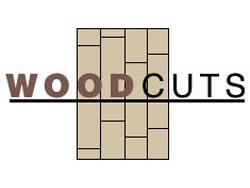Wood Cuts - October 2008
By Rick Berg
Water and wood are not exactly enemies, but if you’re going to sell wood flooring responsibly, you need to be able to educate your customers about some basic facts related to moisture and how it can affect wood flooring.
Start with the most basic concept of all: Wood is a natural product that literally grew up with water. From its first days as a seedling, water has coursed up the trunk of the tree through a system of fibers. So, it should be no surprise that the presence or absence of moisture will have an effect on wood throughout its life as a floor.
At the most fundamental level, moisture in the air and in the subfloor will cause a solid wood floor to shrink or swell. In the summer, when the ambient air reflects high humidity, the floor will tend to close up as the floor boards absorb moisture and swell. In the winter, when the air is dry, the boards will shrink, sometimes exposing cracks between boards. In most cases, these cracks will be minimal and should be considered part of the normal seasonal ebb and flow of a natural product like wood. You’ll do yourself and your customers a favor by alerting them to this reality and ensuring that their expectations match this reality.
n-floor heating systems, with the heat source so close to the flooring surface, pose a special challenge, because there’s going to be a greater tendency for the wood to lose moisture and shrink accordingly. Most of the time this isn’t going to be a problem, since the slight gaps that open up between boards may not be noticeable to most people, and they will close up over time. However, you can minimize the chance of that happening by specifying a dimensionally stable wood-flooring product—that is, one that’s less susceptible to expansion and shrinkage.
That reality of the relationship between water and wood should dictate your conversations with customers, but you should also be aware that there are factors that can minimize those conditions.
First, the reaction of wood to moisture conditions is affected by the nature of the wood itself. Most notably, engineered wood flooring is much less susceptible to moisture changes than solid wood flooring, because the plies of the engineered flooring are laid at angles to one another, lessening the effect of expansion and contraction, which typically occurs across the grain of the wood. Each ply acts to restrict the movement of the others.
For that reason, engineered wood flooring tends to be a better choice in applications where moisture changes are likely to be a factor. This includes below-grade installations, as well as installations over in-floor or radiant heat.
The good news is, engineered flooring is now available in a wide choice of species and finishes, so there’s very little chance that the look your customer desires won’t be available in an engineered product.
If your customer prefers solid wood flooring, there are several species that tend to react less to moisture changes than others. In general, the normal gaps and cracks that appear will be less noticeable with darker woods like American cherry, American walnut and teak. Other species that tend to work well with radiant heat and in below-grade installations include antique heart pine, ash, bamboo, Brazilian walnut, bubinga, Douglas fir, iroko, kempas, padauk, purpleheart, red oak, Santos mahogany, and sapele. American cherry and Santos mahogany, for example, are approximately 33% more dimensionally stable than oak.
With solid wood flooring, quartersawn and riftsawn woods also react better to moisture changes, since the grain expansion and contraction is vertical, rather than side-to-side. You’re also better off with narrow boards, which are less prone to moisture changes than wide-width boards.
The customer still needs to understand that a certain amount of shrinkage is normal during heating season, but if you’ve helped the customer choose the right product, the effect will be minimized.
Another factor that’s critical to your customers’ understanding of water and wood has to do with maintenance. Inform your customers that standard maintenance of wood floors calls for sweeping or vacuuming the floor regularly, using only a slightly dampened cloth on occasion. There are also cleaning products specifically designed for wood flooring.
In addition, HVAC systems should be in place in the home to minimize the dramatic humidity fluctuations that can occur from season to season.
Finally, ensure that the proper vapor retarders are installed beneath the wood flooring. These requirements will be different depending on the subfloor. A concrete subfloor, for example, may require a 6-mil polyethylene vapor retarder, while a wood subfloor may require only an asphalt laminate paper. Whether the floor is installed over a basement or crawl space may also dictate the type of vapor retarder required. The National Wood Flooring Association has developed general criteria for vapor retarders, but you should always defer to the wood flooring manufacturer’s guidelines.
The central point to remember is that water is not wood’s enemy, but a customer who is not aware of the relationship between water and wood may end up being an unhappy customer. In this instance, as in most others, knowledge is truly power.
Resources: The National Wood Flooring Association has published Wood Species Used in Wood Flooring, which contains technical information, including dimensional stability data, on 33 of the most commonly used wood flooring species. Also, NWFA’s Water and Wood is an excellent resource on the ways in which moisture affects wood flooring. In addition, NWFA’s Installation Guidelines is an excellent resource on moisture and other installation-related issues.
Copyright 2008 Floor Focus
Related Topics:NWFA Expo
